Tips for Starting a Garden from Scratch: Beginner-Friendly Advice
Starting a garden from scratch can be an exciting and rewarding experience. Whether you have a spacious backyard or a small balcony, creating a garden allows you to grow your own fresh produce and beautiful flowers. You’ll gain a better understanding of nature while enjoying the fruits (and vegetables) of your labor.
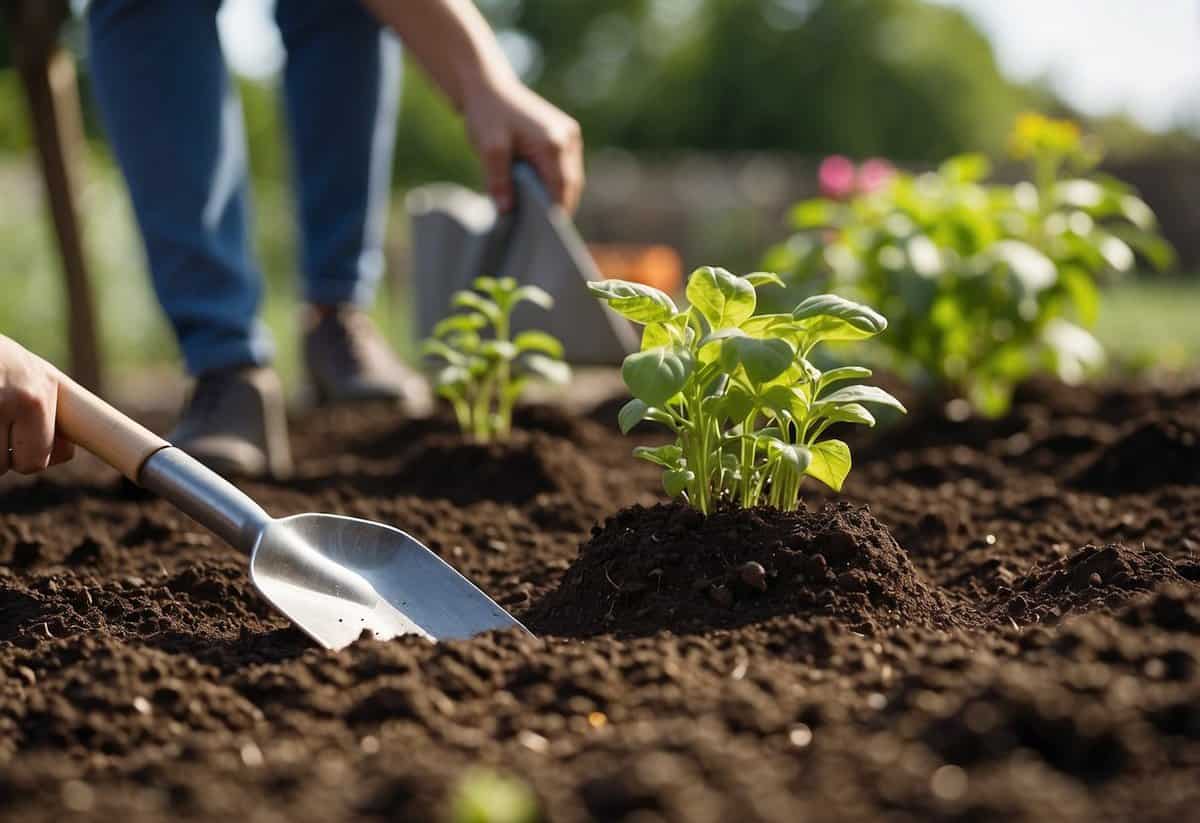
Gardening might seem challenging at first, but with the right tips, anyone can get started. By choosing the right location and preparing the soil, you can set the foundation for a thriving garden. With a bit of patience and care, you’ll be on your way to enjoying a lush and productive garden.
1) Choose the Right Location

Picking the right spot is one of the most important steps in starting your garden. Look for a place that gets plenty of sunlight since most vegetables need at least six hours of direct sunlight each day.
Make sure your garden is close to a water source. Having a spigot, rain barrel, or irrigation system nearby can make watering much easier.
Lastly, consider the soil quality. Good soil is the foundation of a healthy garden. Test the soil to ensure it has the nutrients your plants will need to thrive.
2) Test Your Soil

Before planting, it’s important to test your soil. This helps you understand its pH level and nutrient content. You can buy a simple soil testing kit from a garden store.
Take a small sample of soil from different parts of your garden. Mix them together in a clean container.
Send the sample to a local extension service or use a home testing kit. This will tell you if your soil needs any amendments before you start planting.
3) Start with Easy-to-Grow Plants
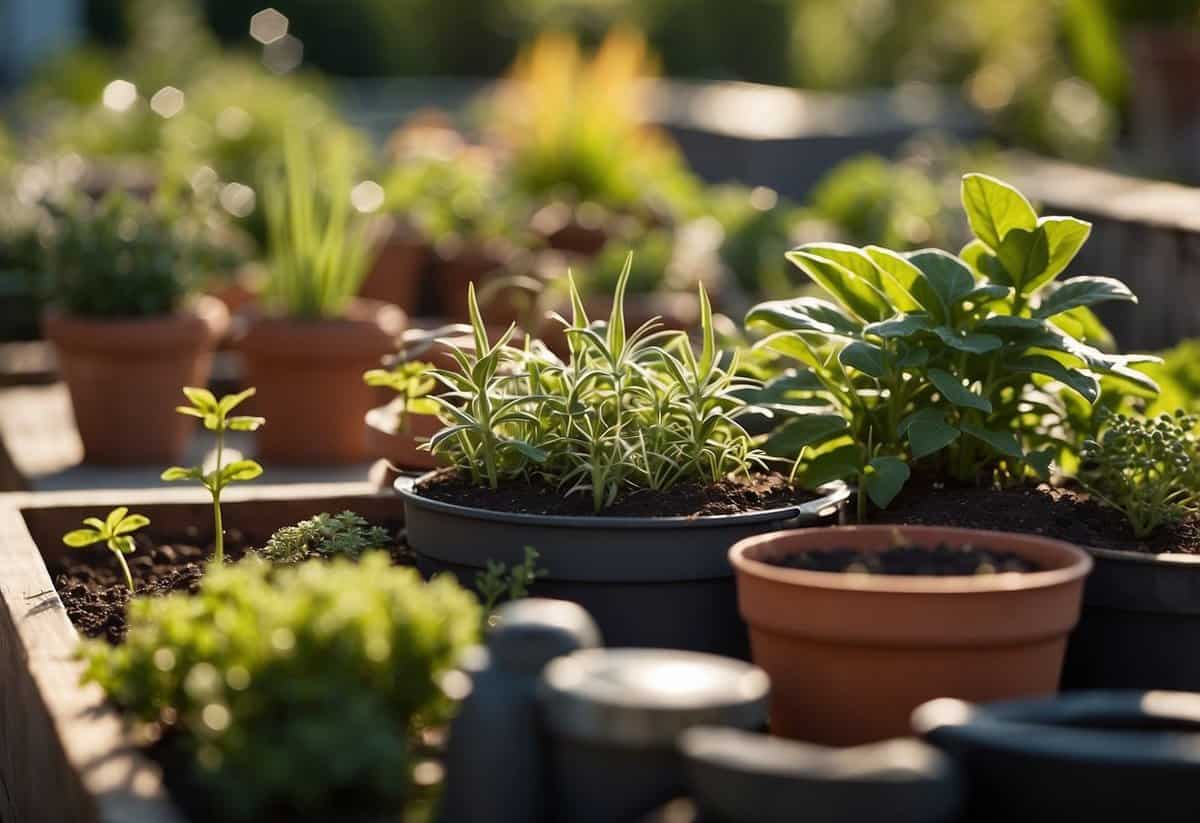
When you’re new to gardening, it’s best to start with plants that are simple to grow. Lettuce, radishes, and green beans are great choices.
Peas, zucchini, and carrots are also beginner-friendly.
Tomatoes and peppers can be started from seedlings and often produce well. Check out more tips on which plants to start with. This approach helps boost your confidence.
4) Compost Regularly
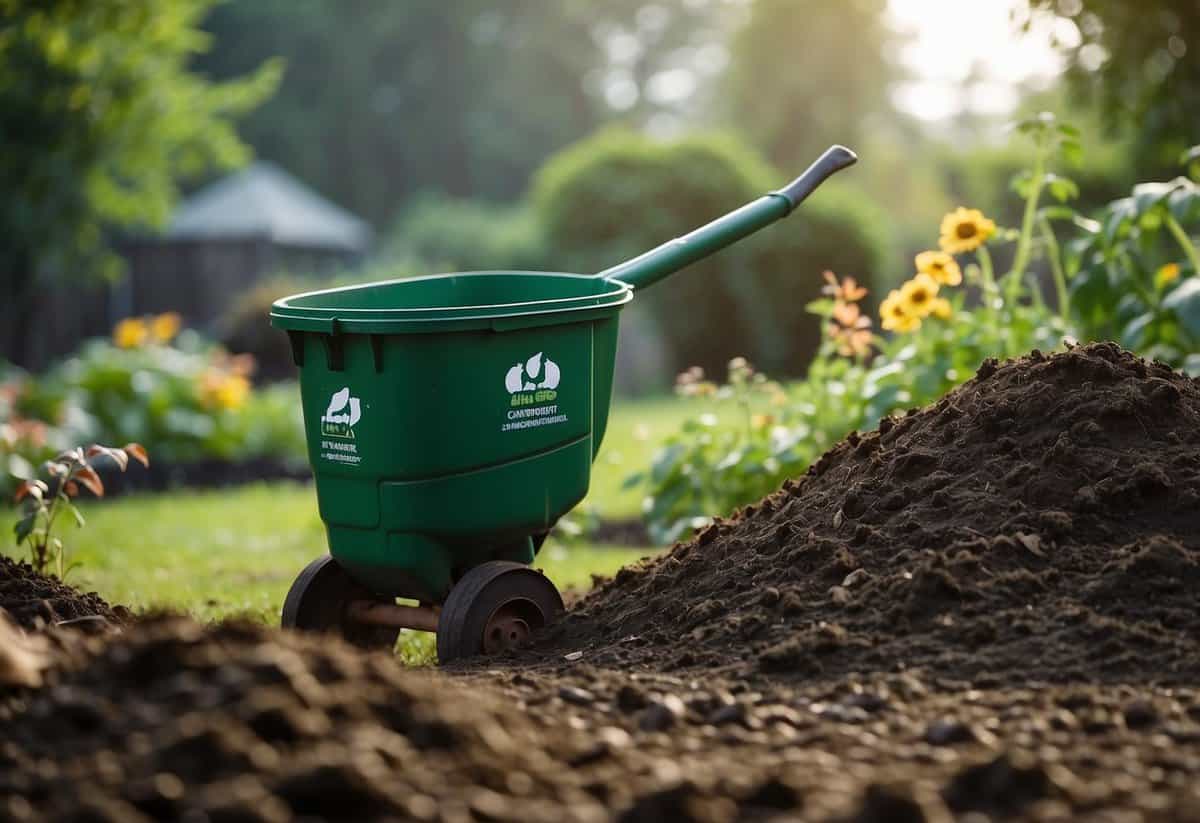
Composting is a great way to provide nutrients to your garden. Start by building a compost bin or buying a tumbler. Place it in a partially sunny spot.
Collect kitchen scraps and yard waste. Mix “green” materials like fruit peels with “brown” materials like leaves. For best results, aim for three parts browns to one part greens.
Turn the compost pile regularly to keep it aerated. This helps it break down faster. Keep the pile moist, like a wrung-out sponge. By adding compost to your garden, you’ll give your plants the nutrients they need to thrive.
5) Water Wisely
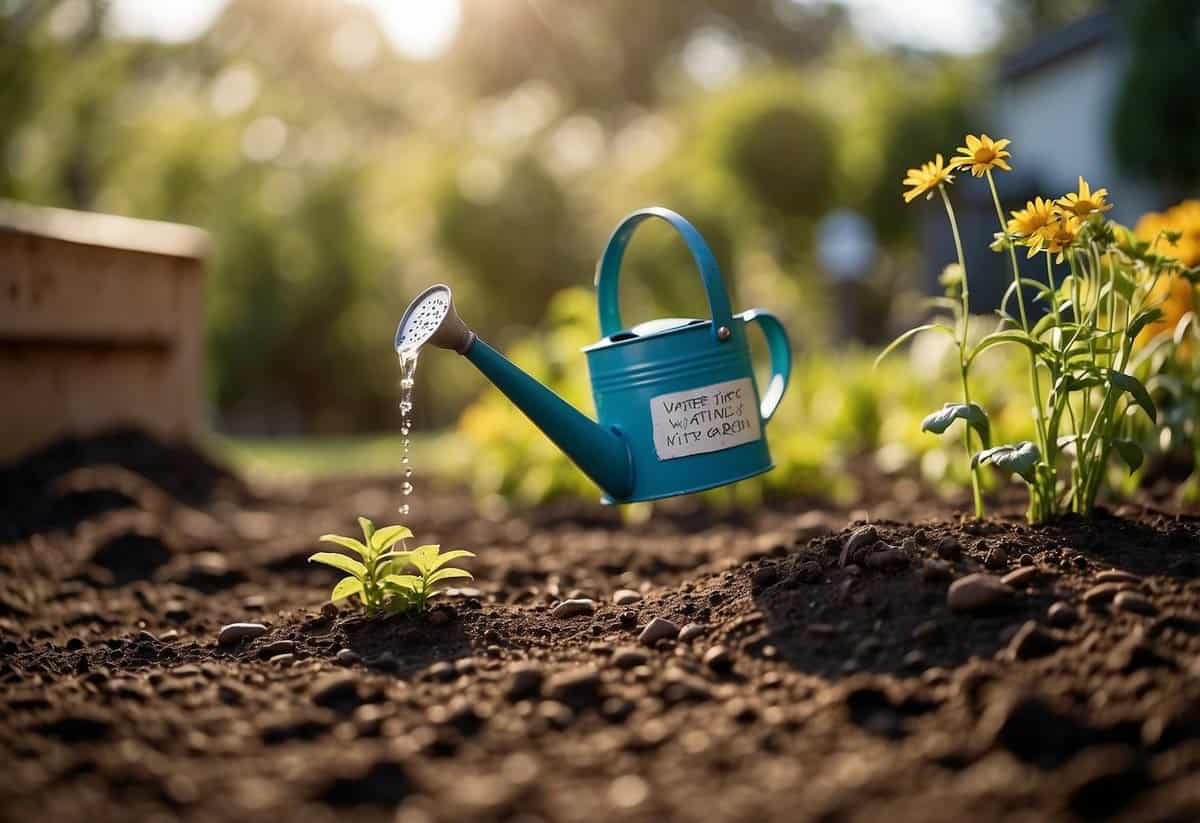
To keep your garden healthy, water at the base of each plant and avoid wetting the leaves. This helps prevent fungus.
Water early in the morning, between 4 a.m. and 8 a.m., to reduce water loss due to evaporation.
Use a rain barrel to collect rainwater. This provides an extra water source during dry periods.
Mulch around your plants to help retain moisture and reduce runoff. This keeps your soil wet for a longer period.
Consider installing an irrigation system with a timer for more efficient watering.
6) Control Weeds Effectively

Weeds can be a big problem in your garden. One easy way to manage them is by using mulch. Apply a thick layer of mulch to smother weeds and keep the moisture in the soil.
Another method is to use a sharp knife to slice through the roots of weeds like dandelions. This minimizes soil disturbance and prevents new weeds.
You can also cover your garden beds with cardboard or newspaper to block weeds. Using black landscaping fabric held down with bricks can also be effective in larger areas.
7) Use Mulch

Mulch is a great way to boost your garden. It helps keep moisture in the soil and reduces weeds. Plus, it can make your garden look tidy.
Use organic options like wood chips or straw. These break down and enrich the soil over time. Avoid using rocks as mulch since they don’t benefit the soil and can heat up quickly in the sun, causing damage. Learn more tips for mulching from Bob Vila.
8) Plan Your Garden Layout

Think about what you want to grow in your garden. Choose plants that fit well together.
Map out the placement of each plant. Make sure taller plants won’t block the sunlight from reaching shorter ones.
Consider pathways for easy access. Plan for enough space between plants to allow for growth and maintenance. Using graph paper or a garden planning app can help visualize your garden layout. For more tips, you can refer to planning the layout.
9) Rotate Crops Annually

Rotating crops each year helps keep your garden soil healthy. When you plant the same crop in the same spot, pests and diseases can build up.
To prevent this, switch your crops around. For example, plant beans where you had tomatoes last year. This practice can reduce pests and help maintain soil nutrients.
Dividing your garden into several plots can make rotation easier to manage. This way, you can keep track of what was planted where each year. By rotating crops, you’ll give your garden a better chance to thrive.
10) Prune Plants Correctly

Pruning helps plants grow better and healthier. Trim back extra branches to focus energy on flowering or fruiting.
For best results, prune at the right time of year. Some plants are best pruned in winter, while others should be pruned right after they flower.
Use proper tools for the job. For small branches, use pruning shears. For larger branches, use a pruning saw.
Always cut at a slight angle just above a bud or branch. This helps water drain off and prevents rot. Follow these tips to keep your garden neat and thriving.
Understanding Your Garden Space
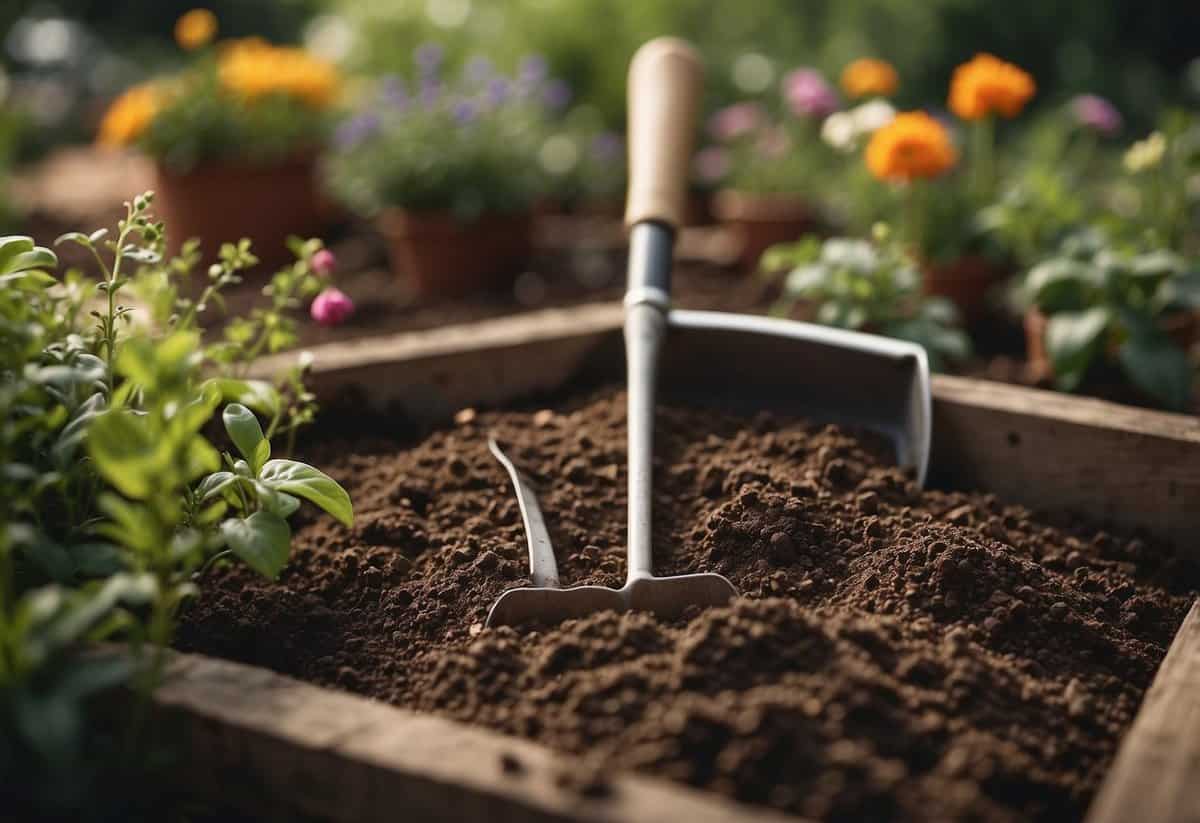
Knowing your garden space is key for successful planting. You need to consider how much sunlight and shade the area gets, the types of soil present, and how easy it will be to water your plants.
Assessing Sunlight and Shade
First, observe how much sun your garden gets throughout the day. Some plants require full sunlight, while others thrive in shade. You can track this by noting the sunniest and shadiest spots at different times.
Use full sun areas for plants like tomatoes and cucumbers. Partial shade areas are ideal for lettuce and spinach. Full shade areas suit ferns and hostas best.
Consider using a sun calculator or garden diary to help keep track of your findings.
Considering Soil Types
Soil plays a crucial role in plant health. There are three main types: sandy, clay, and loamy. Test your soil by squeezing a handful. Sandy soil falls apart easily, clay clumps together, and loamy feels just right—crumbly but holds its shape.
Loamy soil is ideal for most plants due to its balance of drainage and nutrients. Sandy soil drains well but may require more watering. Clay soil holds water but might need improving with compost to avoid root rot.
A soil test kit can help you determine pH levels and nutrient content, which can be adjusted with additives.
Planning for Watering Needs
Water availability is a crucial factor. Check if your garden space is near a water source like a hose or rain barrel. Different plants have varying water needs. Drought-tolerant plants, like succulents, need less water, while vegetables often require more frequent watering.
Consider installing a drip irrigation system for consistent watering. Alternatively, a good garden hose with a spray nozzle can work well. Make sure the water reaches the roots rather than just wetting the leaves.
Mulching can help retain moisture in the soil, reducing the need for frequent watering.
By understanding these aspects, you’ll be well on your way to creating a thriving garden space tailored to your plants’ needs. Enjoy your gardening journey!
Choosing the Right Plants

Selecting the best plants is key to creating a thriving garden. Consider your local climate, the differences between annuals and perennials, and how well plants match your soil type.
Selecting Plants for Your Climate
Your local climate greatly affects plant growth. Choose plants that naturally thrive in your area. For example, if you live in a dry, hot region, succulents and cacti are good options. In cooler, wet areas, think about growing plants like ferns and hostas.
Using hardiness zones can guide your choices. Each zone represents the average minimum temperature of a region. Check these zones to ensure your plants can survive the winters in your area. This way, you avoid planting species that might not endure the cold (or heat) where you live.
Deciding Between Annuals and Perennials
Annuals and perennials each offer unique benefits. Annuals need to be planted every year, but they often provide vibrant and varied colors. Think about flowers like marigolds and petunias. These plants are great for filling gaps and adding seasonal charm.
Perennials return year after year. They are low-maintenance and can be the backbone of your garden. Roses, peonies, and daylilies are good examples of perennials. They may take a bit longer to establish but offer lasting beauty and structure.
Picking Plants Based on Soil Compatibility
Your soil’s composition and health are crucial. Perform a soil test to understand its pH, drainage, and nutrient level. Sandy soil drains quickly but may need more water. Clay soil holds water but might need improved drainage. Loamy soil is usually ideal as it balances drainage and nutrients.
Choose plants that suit your soil type. For sandy soil, consider lavender and yarrow. For clay, think about planting daylilies and asters. Amending your soil with compost can help improve its quality, making it more versatile for a wider range of plants.







